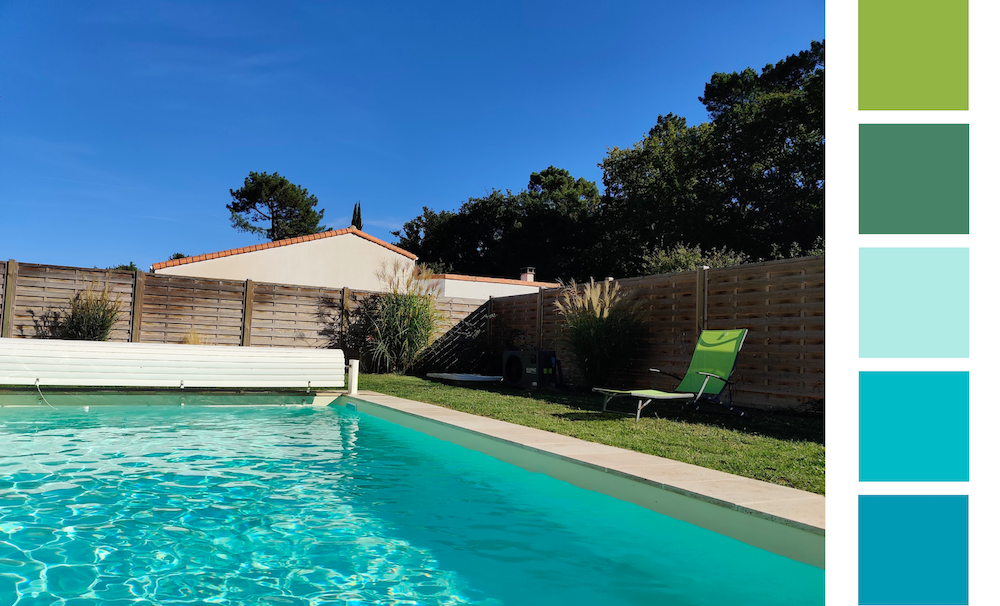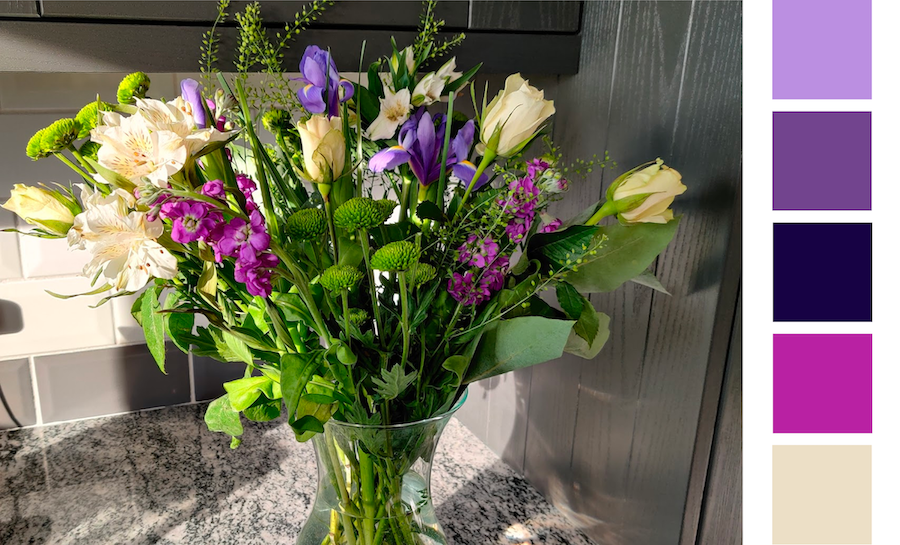Want brand new brand colours? Here are 7 things to consider
You’re considering some brand new brand colours, that’s exciting! Perhaps it’s part of a wider rebrand idea, or maybe you love everything else and just want to update your colours to better suit your business. Before you begin, here are 7 things to think about (including some advice to get you started!)
1. Why the refresh?
There are lots of reasons a business will want to refresh their brand colours. Start by thinking about why you want to. Knowing your ‘why’ will help you to define what you want to acheive with the change.
Do you want your colours to feel more ‘you’, and to align better with your business personality?
Did you start off with any random colours to get you going and now you’re ready to craft a well-designed colour palette for your biz?
Have you had a business change and need to update your colours to reflect this?
Are you considering a wider refresh of your branding and colours will form a part of this?
2. Keeping consistency
Branding plays an important part in helping your business to look and feel consistent across multiple platforms (be that your website, your socials, or your printed materials). It’s important to be consistent with your brand colours so that your clients and prospective clients recognise you and know it’s you at a glance.
Depending on your current colour palette and the way you use it, a change of colours may strengthen or disrupt your brand consistency.
Strengthening consistency - you might already have some brand colours but not know how to use them, where to use them, or if they even work well together. This can lead to inconsistencies across your digital platforms and in print. By refreshing your brand colours, you’ll have a palette that works for you, meaning your content will be much more consistent.
Disrupting consistency - if you’re already pretty consistent but need to refresh your colours, you can ensure the disruption is minimal by building engagement in your colour refresh journey so that clients and followers know it’s coming and feel involved.
3. Inspiration is everywhere
Here at Bloom Creative, our favourite place to go for inspiration is outside. Using photos and an eyedropper tool, you can create beautiful nature-inspired colour palettes. Here are a few we’ve created:






A great online tool for this is Coolor’s Image Picker, which lets you upload your image to their website and move the eyedropper tools around to choose your colours.
4. The meaning behind a colour
Did you know that colours can provoke different responses? Whether that’s an emotional response or an association with something, when we see certain colours we can feel different things.
“Color psychology is the study of how different colors affect human mood and behavior. It explores how colors can influence emotional responses, as well as how responses to color are affected by factors such as age and cultural background.” - VeryWellMind.com
Think about how you feel when you see the colour red? What about green? Yellow? Blue? Purple? White? When you’re choosing your brand colours, consider what response you want your clients and customers to feel.
5. DIY
You can absolutely refresh your brand colours yourself, there’s nothing stopping you! If you decide to DIY it, our top tip is to do your research. Reading blog posts like this one is a great place to start.
Once you’ve considered your target audience, your business personality, and what colours might work well for you, create a moodboard filled with imagery and colours. You could reach out to your trusted network to conduct some market research on your new colour ideas.
How many colours should you use? For some businesses, a wide selection of different colours is perfect for what they need. For others, a range of different shades of one colour with one or two complementary colours works better. Think about where you’ll be using your colours, and what would work best for your business.
6. Investing in professional support
If you’re considering a colour refresh, that means you’ve probably put together some colours yourself before and want something different now. Maybe it’s time to trust the experts by investing in professional support. This doesn’t mean you won’t be involved - lots of professional brand designers are happy to work ‘with you’ rather than ‘for you’ to craft a colour palette together that’s perfect for your business.
Professionals know what they’re talking about when it comes to colour palette design. They stay up-to-date on colour trends and research, which saves you time, and they often have an eye for design to know instinctively what works well together and what doesn’t.
Where to start with professional support? Reach out to some designers you know (including us!) and ask about the process of a colour refresh and for a quote. Be sure to share as much information as you can in your initial enquiry so that they can give you a helpful response.
At Bloom Creative, we offer a free 15 minute discovery call so that you can get to know us and we can get to know you and your business. In this call, we discuss what you need and how we can help. After the call, you’ll get a quote and a bit more information about everything we discussed including info on the next steps.
7. More than colours
As you’re considering refreshing your colours, now’s a great time to look at your branding as a whole.
Are there other parts of your brand that could do with a refresh?
Is your logo working for you? And is it a high-quality vector?
Are your brand fonts clear, legible, and do they suit your business?
Do you have a bank of brilliant brand photos?
Is your website on-brand and up-to-date?
Are you wanting to stand out with extra icons and assets, brand GIFs, or an animated logo?
We’ve written a handy guide to help you discover if a brand refresh is right for you: 5 ways to know if your brand needs a refresh.
One final top tip: when you refresh your brand colours, remember to update them across everything - consistency is key! This will include your logo, your website, your social templates, your cover photos, your newsletter, your business card, your presentation templates, your printed stationery, etc.

